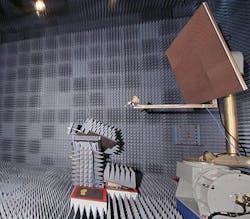Officials of the Defense Advanced Research Projects Agency (DARPA) in Arlington, Va., chose the companies this month for the Advanced Scanning Technology for Imaging Radars (ASTIR) program that seeks to design a cost-effective imaging radar system with similar performance to synthetic aperture radar (SAR).
The companies are:
-- The Northrop Grumman Corp. Electronic Systems sector in Linthicum, Md., which won a $713,256 contract;
-- HRL Laboratories LLC in Malibu, Calif., which won a base contract of $881,786, with potential options for $5.9 million;
-- First RF Corp. in Boulder, Colo., which won a $499,237 base contract with potential options for $2 million; and
-- Vadum Inc. in Raleigh, N.C., which won a $364,141 base contract with potential options for $962,523.
Related: Hypertemporal imaging: the next Big Challenge for high-performance embedded computing
These companies are developing technologies for advanced radar that provides high-frame-rate, three-dimensional imaging of objects through adverse obscurants like fog, smoke, and heavy rain, and efficient beam steering and radar imaging.
ASTIR technology will use one transmit and receive chain and electronic sub-reflector designs that produce a readily available, cost-effective sensor that does not require platform or target motion as in SAR or ISAR, DARPA officials say.
The ASTIR concept will minimize system complexity by using a compound antenna with an electronic sub-reflector that works together with a large primary aperture that would define the angular resolution of the radar.
Ways to do this could include replacing an electro mechanically displaced mirror, as currently used in some imaging radars, with a planar electronically reflecting surface for beam steering; using phase-shifters on the sub-reflector to steer a small spot across the main reflector; or digitally modulating each element on the sub-reflector with an orthogonal phase code.
Related: Hypertemporal imaging: the next Big Challenge for high-performance embedded computing
The ASTIR program's goal is to provide high-resolution 3D imaging for enhanced identification and targeting, independent of platform or target motion; well-focused images at speeds faster than 10 frames per second, even when there is no platform or target motion; and beam steering with one transmit and receive chain to reduce system complexity.
The four ASTIR contractors will focus on an electronic sub-reflector for use with a larger aperture to generate 3D images of stationary and moving objects. A government team, meanwhile, will identify potential military applications of this technology.
In 2016 DARPA officials say they will issue another industry solicitation to build prototype imaging radar systems that use the electronic sub-reflector for a specific military application.
This effort to develop a new kind of imaging radar electronic sub-reflector has two technical areas: electronic sub-reflector approaches, which will last for six months; and electronic sub-reflector prototype demonstration, which will last for 18 months.
For more information contact the DARPA Strategic Technology Office online at www.darpa.mil/Our_Work/STO.



